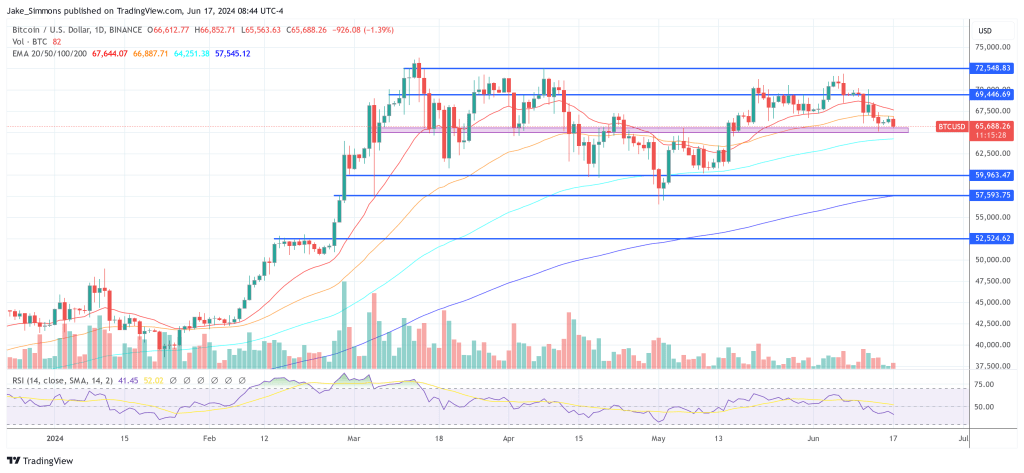In a proposal laid out in the Wall Street Journal, former Speaker of the House Paul Ryan has advocated for a novel fiscal strategy that integrates cryptocurrency, specifically dollar-backed stablecoins, into the US economic framework to counteract the looming threat of a national debt crisis. Ryan, a prominent figure who led the House of Representatives until 2019, underscores the urgency of adopting stablecoins to prevent a catastrophic failure in the next debt auction, which he believes could undermine the global credibility of the United States and precipitate a major financial downturn.
Here’s How Crypto Can Save The US
Currently serving on the Policy Council for Paradigm, a venture capital firm focused on crypto innovations, Ryan brings a unique perspective that bridges traditional financial mechanisms with emerging digital solutions. In his opinion piece, he articulates a comprehensive vision for leveraging stablecoins to enhance the liquidity and appeal of US government debt on a global scale.
Ryan argues that stablecoins, which are cryptocurrencies designed to maintain a stable value by being pegged to fiat currencies like the US dollar, could significantly bolster demand for US public debt. He suggests that these digital assets could outpace traditional foreign investors in Treasury securities, such as Hong Kong and Saudi Arabia, by providing a more stable and reliable mechanism for purchasing US debt.
“Dollar-backed stablecoins not only provide an avenue for maintaining the US dollar’s dominance as the international reserve currency but also act as a crucial instrument for financing the US deficit without compromising long-term economic stability,” Ryan explains. His proposal emphasizes the dual benefits of crypto stablecoins: facilitating effective debt management and reinforcing the dollar’s international standing.
Ryan’s call for a “robust and predictable regulatory framework for stablecoins” is aimed at fostering an environment where these digital assets can thrive securely and predictably. He criticizes the current lack of comprehensive regulations, which he views as a significant barrier to the adoption and growth of stablecoins in mainstream financial operations.
He elaborates on the potential economic implications of integrating crypto stablecoins into the US financial system, including the mitigation of risks associated with fiscal imbalances and the reduction of dependency on foreign debt holders. By doing so, Ryan posits that stablecoins could serve as a buffer against economic shocks, such as those experienced during market contractions and confidence crises in the dollar.
In the broader geopolitical arena, Ryan identifies the strategic importance of maintaining the dollar’s supremacy in the face of rising challenges from global competitors like China. He points out that China has been aggressively pursuing enhancements to its international economic stature, positioning itself as a formidable rival in the global financial system.
“By integrating stablecoins into our financial arsenal, we not only secure our financial autonomy but also counteract efforts by other nations to erode the dollar’s global influence,” Ryan asserts. He stresses that proactive financial innovation, such as the adoption of stablecoins, is critical to sustaining the US’s economic dominance and preventing potential political and economic unrest.
Notably, Tether, the issuer of USDT, is already one of the largest US treasury holders. As of March 31, its financial records showed holdings of $91 billion in US Treasury bills, both direct and indirect, along with $5.4 billion in Bitcoin. These holdings ranked Tether as the 19th largest global holder of US Treasuries, situated between South Korea and Germany.
At press time, BTC traded at $65,688.





